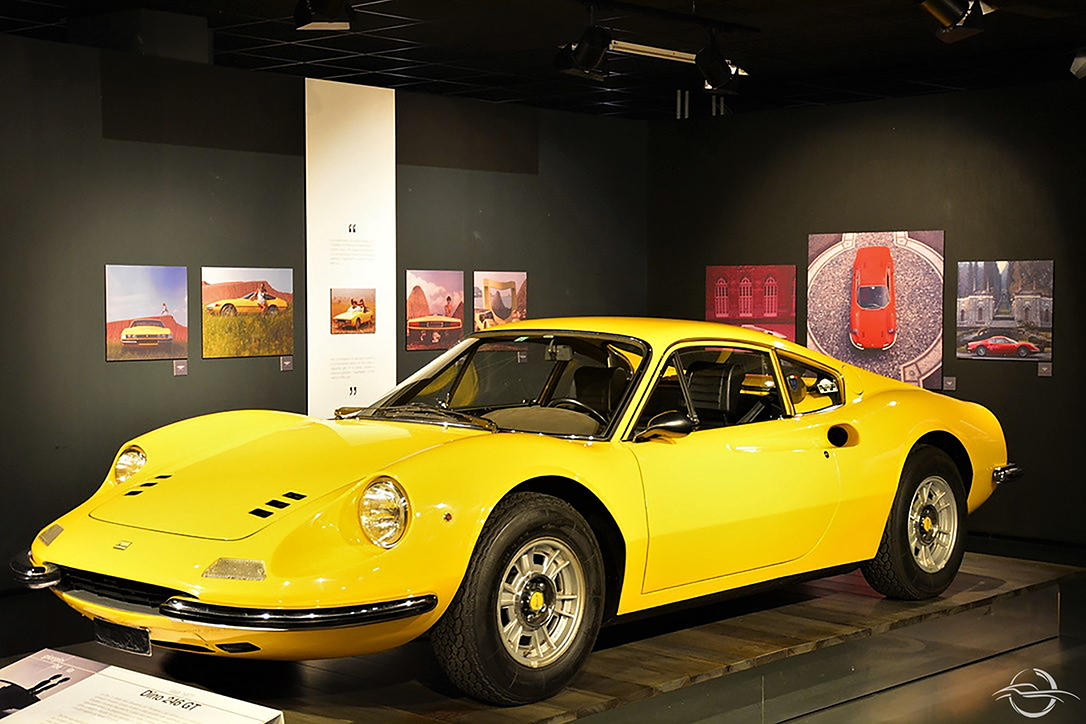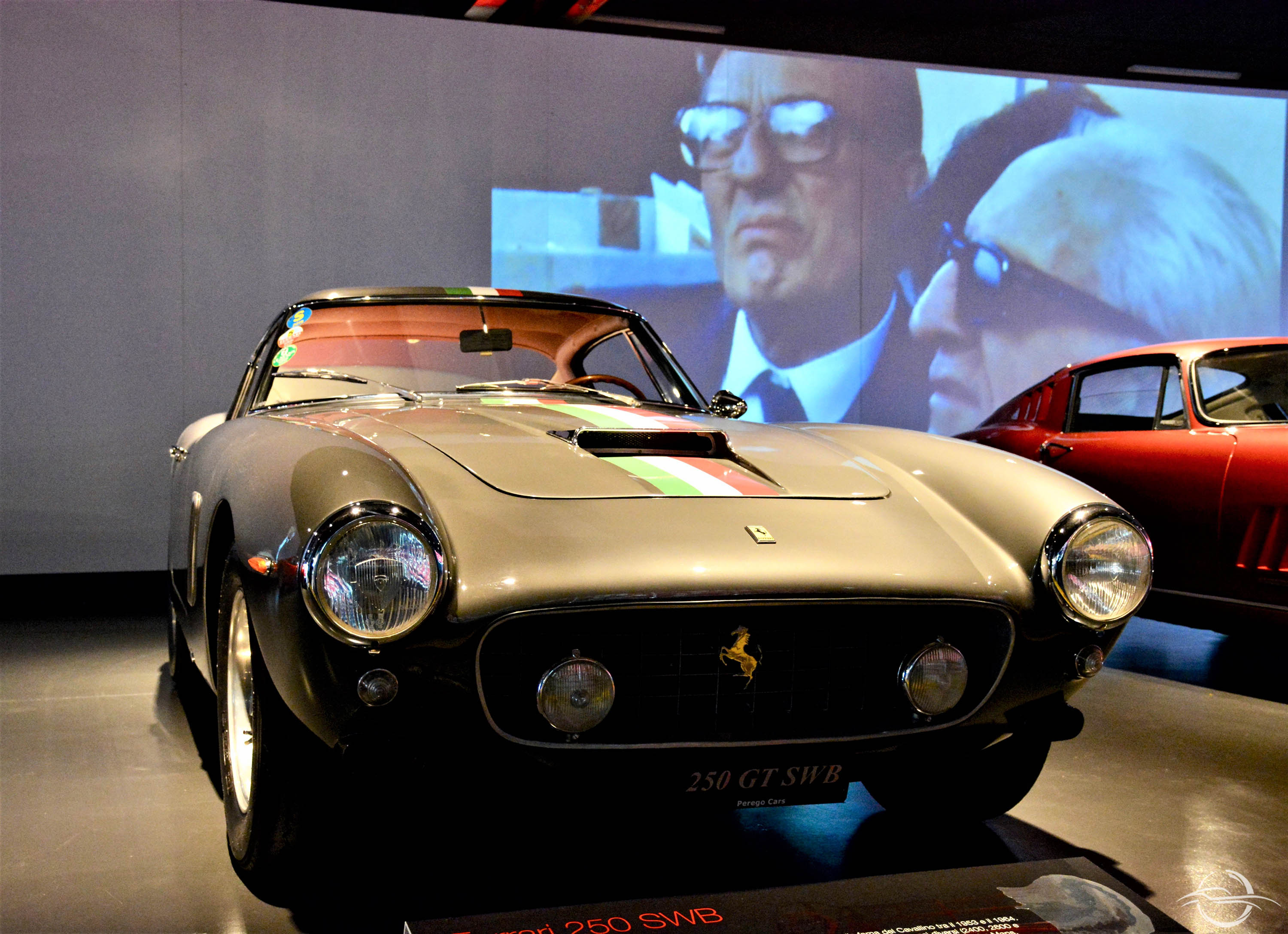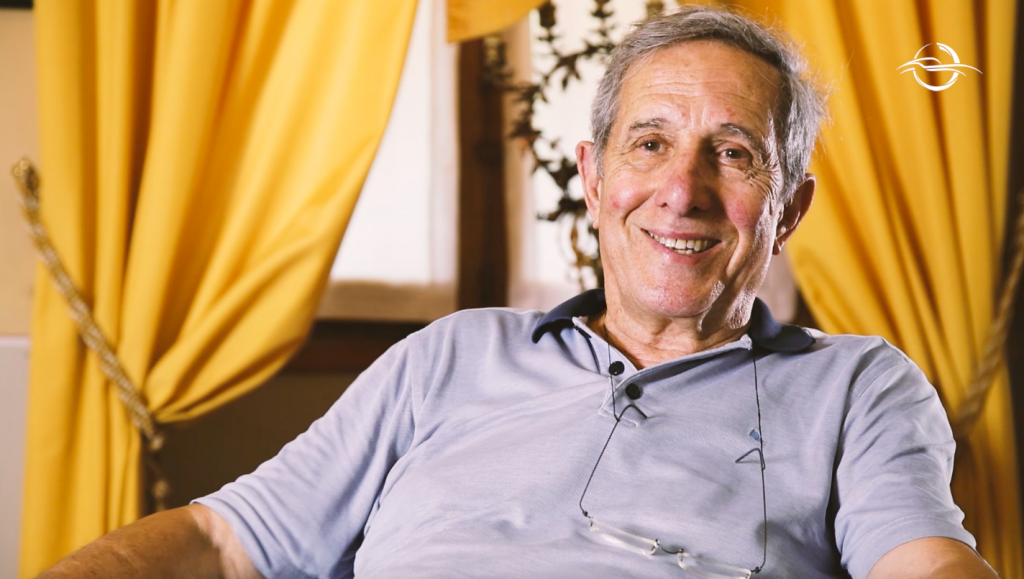Scaglietti, a page of history
– I mean, homologation was a somewhat long phase, wasn’t it?
– Yes. We only started with actual production after homologation.
– Besides its straight-forward role, what was the relevance of homologation?
– It was huge. To resolve homologation issues meant to take very important steps in research. Crashing against a wall with a four-seater 8-cylinder Mondial, with most of the weight at the back, or with a very light Dino, with a small engine, were two very different things. Not to mention safety belts or suspended and non-suspended masses. Every car had its own history. The company has always adopted an uttermost professional approach from that point of view too: if the regulation changed half-way through the production, we changed the car’s set-up.
- Ferrari Dino 246 GT at Museo dell’Automobile MAUTO in Torino
– Sure. I guess that in a certain way, homologation was already implicit in the project from the very beginning, that is, from the prototype.
– Yes. When the prototype was born, we always needed to consider homologation. For example, with Mondial, we started using hydraulic pistons as shock absorbers. We used buffers similar to those used on railways, which were smaller, of course. They were manufactured by Vaias Auto in Turin. They acted as dampers and when the car crashed against a wall nothing was damaged, the risks for a driver travelling at a speed of 50km/h were zeroed. At Ferrari, we made nice cars, with short noses and they couldn’t mount a bumper beyond a certain limit, due to aesthetic reasons: I mean, they weren’t nice, so do you know what we used to do? We enlarged and calibrated pistons to shield our 1200 kg against the wall. The next invention was concertina metal sheet, that is, the absorption of kinetic energy from the deformation of metal sheets and from the front section of the car.
- Oscar Scaglietti
– Your job involved ongoing contact with novelties, it imposed you to always be in the know!
– Yes, but this wasn’t a burden to me… on the contrary, I was always electrified by new things. For example, did we need to study the impact? Let’s start, let’s get studying! You know the little man in the car, prior to simulating the test with the mannequin, we needed to perform the studies and who did it? Oscar! I sat in there for hours and hours, with all of the tools in front of me and then busy making calculations to stop the crash as slowly as possible. There are books as thick as this by the American HTSA (Harmonized Tariff Schedule Annotated) we had to knuckle down and learn them well, from start to end.
– How many tests did a car need to undergo for every position?
– Three: front-impact, side-impact and “whiplash”. Of course, seeing a car that we now define as a work of art, crumble against a wall, it was something which gave you goose bumps! In America, they drove us mad with all of the homologation tests.
- Ferrari 275 C at Monza Eni Circuit
– Really? Tell me about an extreme case.
– We needed to obtain the -40°C homologation for starting the cars, the windows’ defrosting and, especially, the mechanical resistance of the materials which become very fragile at that temperature below zero. In those cases, we needed to perform tests in the Weber refrigerating rooms. Do you know what that means? I’ll explain it now: it was about sitting in a driving suit with gloves at -42°C, for 6 consecutive hours. No, I guarantee that it wasn’t nice at all!
– Was there any car which caused you a few bothers during homologation?
– The Ferrari 365 GT4 Pininfarina, the “Gobbone”: we couldn’t manage to get the exhaust pipes to cool down. We struggled a lot because the temperatures were always too high. As far as everything else is concerned, I don’t remember particularly tricky situations. The difficulty mainly lay with being able to keep up with all changes. The homologation method was constantly evolving and not only in function of the crash but also with regards to searching for uttermost safety for passengers and then pollution. We were always a step ahead of the others. We were always in order with all of the regulations and homologations and not only in Italy but worldwide. Everything was checked specifically because satisfying (and especially protecting) the client was essential for us. We needed to obtain homologation for Europe, USA, Japan, Australia, etc. and in terms of regulations, each country was different. Maybe it was only a slight difference, but they were never identical. For example, in Australia, just like in England, cars needed to have the driver’s seat on the right… initially, we convinced them that it was more chic to have the driver’s seat on the left, “You have an Italian car, show off the fact that you have a different driving position, leave the right-hand drive to friends with a Rolls Royce!”.






It’s natural that during the crucial years like those that Oscar lived, the attention is often focused on the subject of transformation and change which were the order of the day back then. Therefore, I spontaneously think about Scaglietti’s evolution, acquisitions and transfers that have weaved the central idea of their history.
– What is now in San Lazzaro, where Scaglietti was located?
– Ferrari, where they work on the steel bodywork: today, you know, the assembly is all robotic. I cannot tell you precisely how many cars they manufacture per day, but I know how many we manufactured, ten: 8 Dino, 2 Daytona and any other variants outside of the ranges.

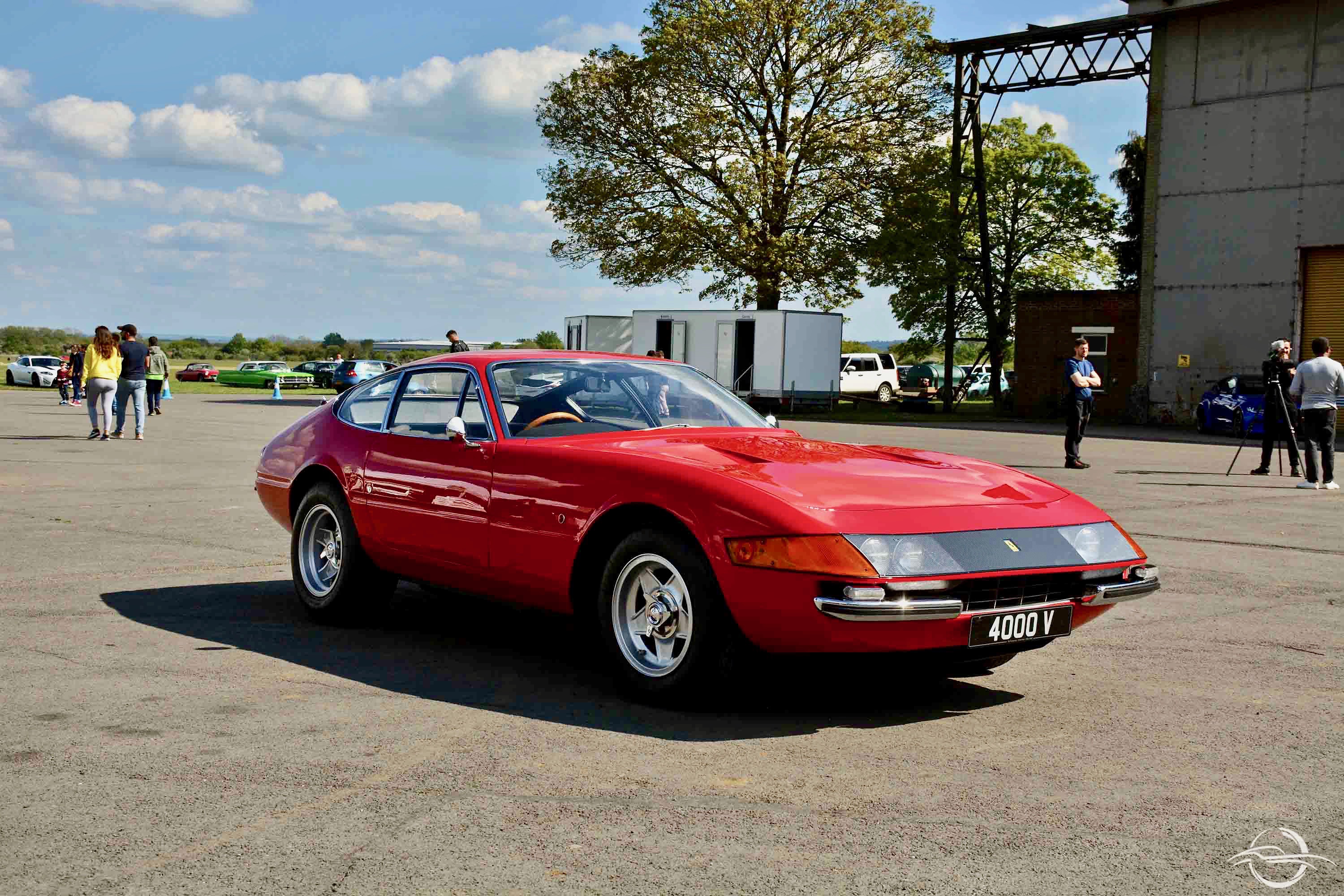




– Let’s skip back a few years. Can you tell me, how did your father’s business expand? I mean, from the very beginning.
– My father expanded the business in steps. Initially, when I worked as an errand boy, he had just moved from via Francesco Selmi, there was only the first building. Then, Sergio bought the land bordering with the courtyard. It was one of the rice weeder’s shelters, where the rice weeders could take refreshment and reach the working lands. I saw them and I remember them well… it’s an image which stuck in my mind. I saw them leaving on the trailers, they looked like livestock trucks. Then I saw them come back home, exhausted from the effort… at the end of the season, with a sack of rice, a little bit of money to keep their families. Poor women!
– And what about the second building?
– The second building, built by my father, was a little larger. It was divided into departments: at the end, there was the varnishing department, with a loft for upholsterers and electricians. In the middle, we managed to have eight or nine workers.
– And when did you move to San Lazzaro?
– I don’t remember whether it was ’61 or ’62. In any case, it was a move that yielded us with a building of one thousand square meters. That was at the beginning, in the following year, we expanded the building by another thousand metres. Then, five or six years later, there was another acquisition which provided us with an extra eight-hundred-metre building: it was an inhabitable building with a ramp, it was great! We built a loft for the upholsters and electricians in the last building too, which was a lot more spacious than in the previous one. The upholsterers were Ermanno Luppi, Camillo’s grandson (who already worked with us) and his brother. I actually think that it was at that time that we hired the first woman who worked with us.
- Tappezzeria Luppi, the tradition continues with Fabio Luppi
– What did she do?
– She sewed leather. The electrician, Mr Adolfo Bertacchi, also worked upstairs, in the loft. They were independent and the rent was discounted off the cars that they worked on. In that way, the manufacturing was unified all under the same roof: we were self-sufficient and every step was under control. At first, Ferrari made an agreement with Ford, which was never implemented, and afterwards, they made one with FIAT, which came into fruition. In the first years of the seventies, we built the SPA, so that the share packets could be managed. Scaglietti was divided between Ferrari, Giovanni Agnelli, my brother and myself, who held my father’s shares.
– And afterwards?
– Then there was the final transfer of shares. When Fiat purchased the whole pack, I was hired as an executive, in the seventh F level.
– It has been an actual earthquake for you.
– Yes, it was a huge change. After this step, Carrozzeria Scaglietti lost the idea of the factory where we all knew each other and lent each other a hand. With the new management from Turin, we noticed that this way of working upset the manufacturing plan, so they started separating the departments neatly: they got to the manufacturing department, they took the best workers (the tireless ones, who worked even at night) and they created the sports management department. Sport and production cars got separated, there was no longer a dialogue between the two, they were two parallel paths. The Knight Commander (Ferrari) knew that if we won the sports races, we sold many more cars and that is the reason why he created a lot of synergy between the sports cars from production cars departments. One helped the other. Whereas Fiat had a different view of the situation.

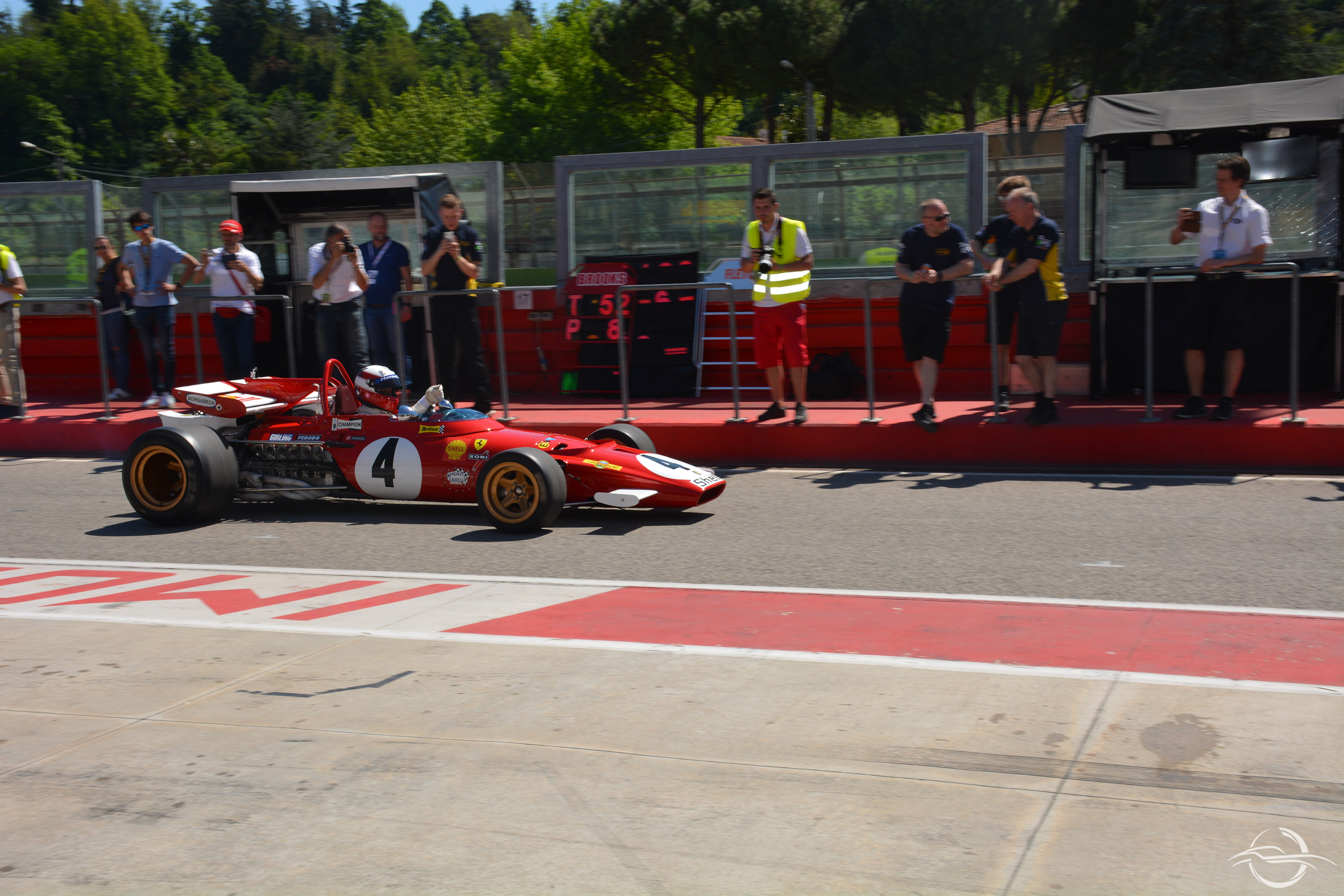




While listening to him, I realise that his role of “privileged medium” – not only because he’s Sergio’s son, but also a witness of the time – doesn’t make Oscar justice. Behind his telling the wheel of changes of the past years, his putting himself aside (there, in a little corner of the story) as if he was only a witness, there is a kaleidoscope of untold stories, blossomed in the shade of a colossus like Sergio. And there is also (actually, especially) a lively personality, full of creativity, hungry for life and experiences. The more I listen to him, the more I want to turn the spotlight – for once – onto him, as a person and not only on his point of view relating to the facts.
– As I listen to you talking, you convey the impression of a person who has always loved learning new things. Is that right?
– You know, I’m a joker: I have always needed to grow, to study something. Rather than becoming fond of a specific project, I used to be fond of whole periods of research involved with it.
– I guess that you will have also travelled a lot.
– Yes, I have been around the whole world, “Experimental Constructions” at the beginning, “Experience Department” and finally “Ferrari Engineering”. I started with the structures of the traditional systems’ sills in three metal sheets assembled together and I got to the extruded already in the final configuration, without assembly, in one individual structure which bore all of the reinforcements. From the Ferrari 250 GTO to F1… I remember the F1 noses! Firstly, it was a single metal sheet piece, then we escalated the process in collaboration with the companies manufacturing composite materials: pre-impregnated fiberglass, continual fiber fabrics, hybrid fabrics. I fervently remember about when we introduced the polystyrene spoilers in F1. We were amongst the first to use the aluminium radiators, the others still had brass ones.








– Over the course of your career, can you remember a period that was more exciting than the others?
– Every moment always brought something new with it. For example, I remember the whole aluminium project in England as an extraordinary moment, I had to implicitly learn the use of the different alloys of this chemical element. The European automotive companies participated in this project. The purpose was lightening the cars as much as possible for energy saving on consumption and, as a consequence, for pollution. Audi surpassed all of the other companies and in 1994 they proposed the A8. That was one of those experiences that I like: when I have something in mind, I need to go looking, to eviscerate. Of course, it wasn’t all a bed of roses. That was also a hard time because I was away from home for a long time.
– How long were you away for, on average?
– I went away even two or three times a month, for three or four days, in England. Luckily, during the same period my son Matteo was doing the Erasmus project at Birmingham University, so we met in the evening… when we could, we spent the weekends together too. It was nice, being far from home made us feel closer.
– And what about your experiences outside of England?
– I had many. I’m happy that I had the chance to travel around the world and to meet many people. I have been to Sweden to talk about aluminium, in Spain to talk about radiating systems, in Germany at Bosch to talk about my job.
– How did you feel when you were making a public speech?
– Very much at ease. I am not afraid to talk to the public nor privately, you know. I fought in the war with Enzo Ferrari (the “Big Man”, as my father used to call him) to have the first autoclave.
- Ferrari 250 SWB in the foreground – Sergio Scaglietti and Enzo Ferrari in the background – MAUTO Torino
–… and I guess that you needed to be brave to be in a war with someone like Enzo Ferrari! But let’s go back to your travels. What did you like about them?
– When I travelled, I came into contact with other working methods. In a factory in England, for example, I saw structural glues by Ciba being used, for constructing aeroplanes. They weren’t on the Italian market then, (they stopped beyond the Channel) so I asked Ciba to instruct us on their use and, with engineer Mauro Forghieri, we used them to nail the framework of the Formula cars from the late 50s to the early 60s. We built the first boxed frames, with dual wall, like a sandwich: two aluminium metal sheets which were distanced in the middle by rectangular or square-shaped tubes, depending on the intended use. In the middle there was the bicomponent strong epoxy resin glue and, to finish it off, a rivet every two centimetres, just like for a plane. This dual shell became structurally resistant and light.
Aluminium, chromium-molybdenum alloy steel, niche-chromium-molybdenum alloy steel… a special alloy for tubes, of different sizes, that Falck made only for us. Our tubes were a lot more expensive, they required the extruder, they were made from a metal sheet with no soldering. We nicknamed the machine that made the tubes at Falck the “rollers’ tank”! We also made the frames with the same tubes, of different sections and thicknesses, because Ferrari didn’t use steel, but we used chromium-molybdenum alloy instead. We were very skilled at using fibreglass, we made bumpers with it, as well as seats and the wheel-arches. We manufactured full cars, the first Ferrari 308 frames, the one designed by Fioravanti for Pininfarina. We worked for months at Scaglietti’s, with tests and samples, to find the right formula.
- Engineer Mauro Forghieri
– On the other hand, from that point of view, Enzo Ferrari loved experimenting.
– Yes, Enzo Ferrari believed in novelties. It’s no coincidence that one of his most famous statements has been: “the best car is the one which still needs to be built”. I remember that he always wanted us to go to him with some novelties. After the experience at Augusta, we started manufacturing the first parts in carbon fibre: we showed him what we could do. Initially he was sceptical, just like for the rear engine, but he trusted us and he let us try it. I became fond of composites. We started with the Ferrari 308 and from then onwards we started creating super techno-polymers, it was a period that was all projected towards the future, which gave me the opportunity to go to the most important labs in Europe.






– Which adjective would you use to describe your working experience?
– I’d tell you that it has been “engaging”. If something wasn’t available, we had to invent with the technical office the best and lightest system, the system with PLUS points in everything. That’s why I can modestly tell you that I know all of the car!
It’s true, in some cases it was about small things, which were however well-made: the collaboration for a boat with a Ferrari engine; the bicycles for Colnago; some space labs and also parts for the Hubble space telescope; the machines for passive exercising for the launcher Soyuz… I mean, from the land to the sky, through the sea!
Yes, if I were to summarise my working life, I’d tell you that continuing to learn has been the greatest opportunity offered to me. I would do everything that I have done up to this day in the same way, with no regrets. Maybe by trying to improve too. I’m not an engineer, I have never wanted to be full of myself pretending to be what I’m not. Everybody knows that I attended school up to the second year of middle school and then I started hammering straight away. My strength is that I have always tried to keep up-to-date through courses, I have never stopped. What I know, is all down to my hard work.
- Three Eras – Ferrari 750 Monza – Ferrari 250 GTO – Ferrari 612 Scaglietti – MAUTO Torino


